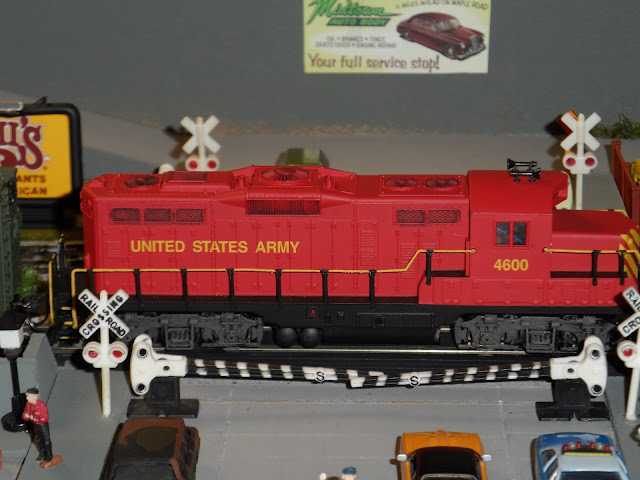Ever have one of those projects on your modeling to do list that never quite gets completed? Here is the story of one such rolling stock project. In the 1990s I visited a huge model railroad display in Flemington New Jersey called Northlandz ( http://www.northlandz.com/index.html ). One of the things I liked was a train consisting of a Lehigh Valley locomotive a several white and black Lehigh Valley 50' boxcars. Probably the first "unit train" I ever saw. I already had two Lehigh Valley locomotives, A Proto 2000 SW8 and a Walther's Trainline FA so I kept my eyes open for a few similar Lehigh Valley boxcars. As luck would have it International Hobby Corp in Philadelphia was having a freight car sale and I bought six of their Lehigh Valley 50' white and black boxcars.
Upon arrival on the old layout the cars ran terribly. At this time much of the HO Scale rolling stock came with horn hook talgo mounted couplers and plastic wheels. After wobbling around the layout for awhile the cars were relegated to a siding and then a shelf seldom seeing any action. Upon moving and starting a new layout the cars remained in the bottom of the box. As I started upgrading my fleet the cars eventually received body mounted knuckle couplers and additional weight however they still rolled terribly and saw infrequent track time.
Around 2011 I started to upgrade my locomotive fleet with number boards and the freight car fleet by eliminating duplicate numbers. The LV cars received six new road numbers ran a bit and then back into the box. All the while new cars have been added to the fleet and upgraded with metal Kadee couplers and metal wheels. In late 2012 three of six LV 50' boxcars received Intermountain metal wheels. The difference was amazing. The car rolled straight and true! They could now become layout regulars. The next fleet upgrade in 2013 saw the remaining 3 cars receive Intermountain metal set and voila! the six LV cars were running great.
Now finally after almost 15 years the six Lehigh Valley Boxcars are in the regular revenue freight rotation. Why the long delay in getting these cars upgraded? Looking back it seems like they suffered from an out of sight out of mind situation. When new metal wheels arrived and I picked the cars to upgrade they were always overlooked. As new cars were purchased and fleet upgrades continued these cars just could not crack the starting rotation. Now I'm glad to finally utilize them.
Here are the last three cars toward the rear of a fleet upgrade train heading to Terminal Yard
A close up of NIRX #41002 and NIRX #41005 The reporting marks belong to General Electric who owned and leased the cars to the Lehigh Valley. The prototype had a total of four of these NIRX cars.
The Six LV cars behind a Proto 2000 SW8
The Lehigh Valley cars on the upper level
The six cars together at last on the upper level viaduct



















































